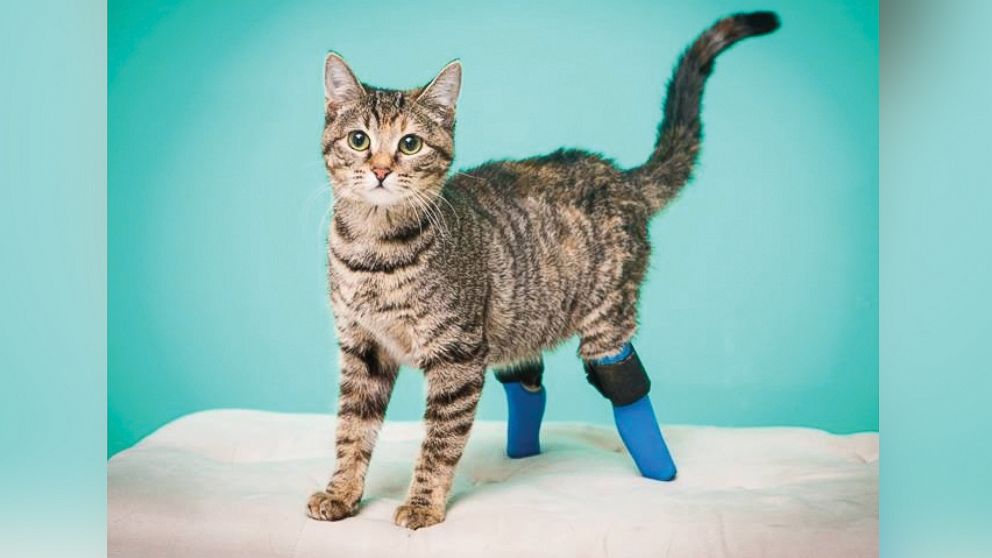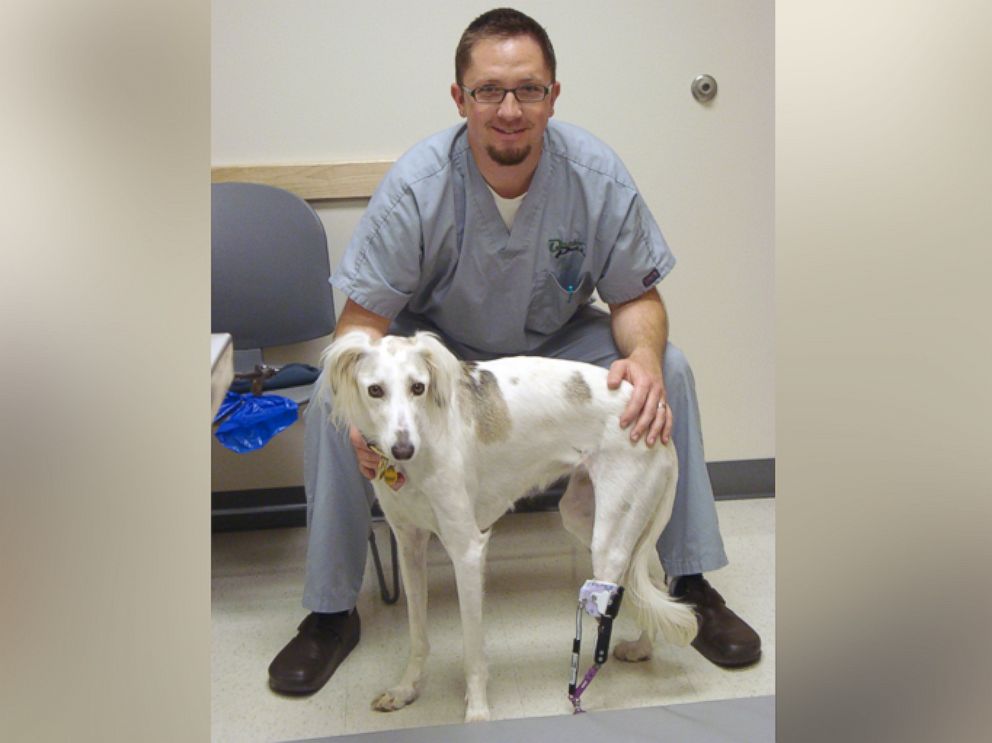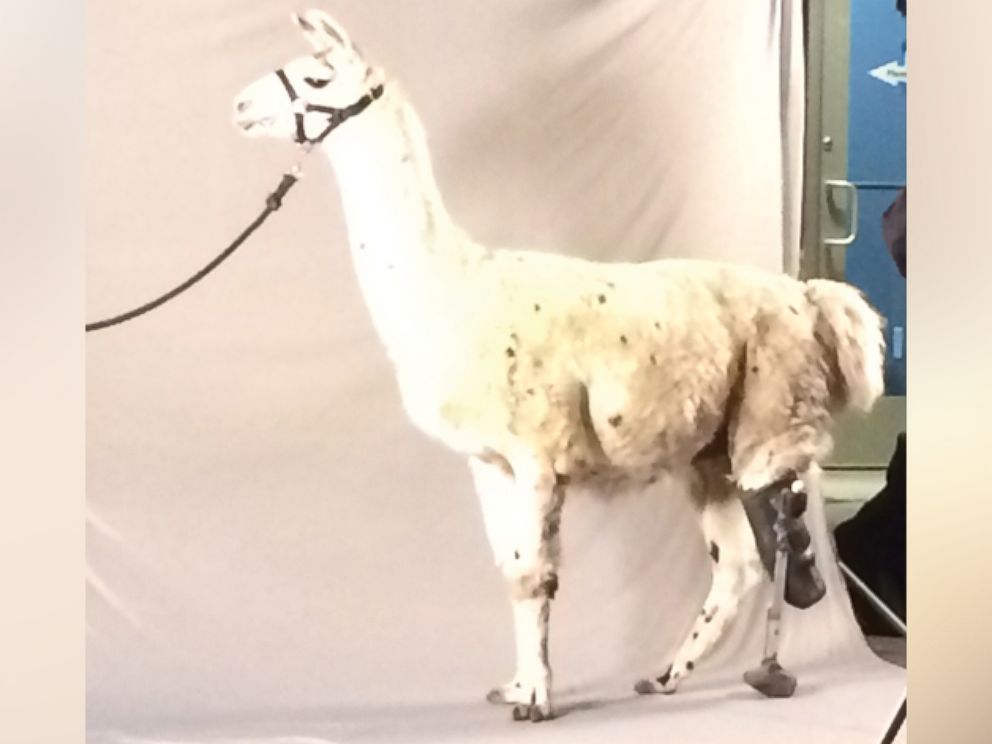This blog was created for Niles Animal Hospital & Bird Medical Center by Peter S. Sakas DVM in an effort to provide information & discussion about animal related issues. It may move into some eccentric directions on occasion if the mood strikes me as I get more comfortable in this form of communication. I am open to suggestions & comments about the blog. Also view our hospital website www.nilesanimalhospital.com or Facebook page Niles Animal Hospital and Bird Medical Center.
Monday, April 28, 2014
Friday, April 25, 2014
Meet 5 Incredible 'Bionic' Pets With Prosthetic Limbs
Amazing stories.......





Meet 5 Incredible 'Bionic' Pets With Prosthetic Limbs
April 22, 2014
By LIZ NEPORENT

Nora lost her back legs to an unknown
trauma a few years ago. Her prosthetics do a good job protecting her
back legs and allowing her to move naturally.
Courtesy Mark Stevens/mstevensphoto.com
If the Six Million Dollar Man had a pet sidekick, it would probably be
one of these incredible animals. While not exactly bionic, all of them
were fitted with an artificial limb after an amputation.
These resilient creatures prove that people aren’t the only ones who can
benefit from amazing advances in prosthetic technology. Experts say
more and more of our animal friends are being fitted with replacement
parts that help them get back on their paws, feet or fins in no time.
“When we started building prosthetics for animals back in 2002, we would
do maybe one or two a month,” said Martin Kaufmann, co-founder of
OrthoPets, a Colorado-based animal prosthetic maker. “Now we make eight
to ten a week.”

Courtesy orthopets.com
Sally,
a 6-year-old Saluki was found in Iraq by an American soldier and was
brought to the U.S. for treatment for a damaged hind leg. She received
an implant about four years ago. The veterinarian who performed her
surgery adopted her.
The main reason animals are receiving prosthetic limbs more often than
in the past, Kaufmann believes, is because we humans have come to look
upon ourselves as the guardians of our four-legged friends rather than
the owners of disposable possessions.
“Once you see yourself as a guardian, you can look at animals through a
different lens,” he said. “Your mindset is not to euthanize or chop off a
leg, but to help them get back to normal function.”

Courtesy Orthopets.com
Tripod,
a rescue llama, fractured his back left leg and ultimately it was
amputated. Now fitted with a prosthetic, he works as a guard llama on an
alpaca ranch in Colorado.
The most common site of prosthetic limb replacement on an animal is the
paw or foot, Kaufmann said. When a four-legged animal has an amputation
of the front leg, it’s usually high up near the shoulder. In a back leg
amputation, only the lower portion of the leg typically gets removed.
Socket prostheses are the most common type of replacement limb used in
animals. They slip over the limb stump and then strap or buckle into
place. Newer, integrated prostheses involve implanting one part of the
device into the bone and then anchoring another removable part into it
with a screw. Either kind provides long-lasting limb support and more
natural movement, Kaufmann said.

Reuters Photo
Motala,
a 50-year-old elephant in Thailand who lost her left front leg after
stepping on a land mine a few years ago, received a new leg.
A typical dog prosthetis paw costs between $1,200 and $1,500 dollars,
Kaufmann said. Cat replacement limbs are smaller and less expensive.
Prosthetic limbs made for larger beasts like llamas, cows or horses are
more expensive.
Most animals are first fitted with a temporary teaching prosthetic. Then
once they get the hang of it – typically in about two weeks – they’re
switched over to permanent hardware, Kaufmann said, adding that all
animals have that eureka moment when they figure out how to use their
new limb.
“It’s the most exciting thing in the world to watch,” he said.

Courtesy Orthopets.com
Bunker
lives on a golf course in Canada. His leg was struck and fractured by a
golf ball. A local vet teamed up with OrthoPets to donate his
amputation and new limb. He’s now happily roaming the golf course once
again.
Tuesday, April 22, 2014
Americans are having dogs instead of babies
Americans are having dogs instead of babies

What you get when you cross a Shih Tzu with a someone who doesn't have kids yet.
Reuters/Phil Noble
The fewer babies Americans give birth to, the more small dogs they seem to buy.
+
Birth
rates in the US have fallen from nearly 70 per 1,000 women in 2007, to
under 63 last year—a 10% tumble. American women birthed almost 400,000
fewer little humans in 2013 than they did six years before. The drop-off
has come exclusively among 15- to 29-year-olds. This chart, taken from a recent report by the US Department of Health (pdf), does a pretty decent job of showing how much of the growing disinterest in having babies is due to younger women:
1

Meanwhile,
the ownership of small dogs—that is, pets weighing no more than 20
pounds (9 kilograms)—is doing just the opposite. Americans have been
buying more and more small dogs each year since 1999. The population of
little canines more than doubled in the US over that period, and is only
projected to continue upwards, according to data from market research
firm Euromonitor.
+
“You do not have to go to many pet shows to realize that the numbers of small and tiny dogs are on the increase,” a report by Pets International opened in 2010 (pdf).
+
And rightly so. The number of small dogs has grown so fast that they are now the most popular kind nationwide.
+

It
could just be a coincidence that Americans are birthing fewer babies at
the same time as they’re buying a lot more little dogs. But there’s
pretty good reason to believe it isn’t, Damian Shore, an analyst at
market-research firm Euromonitor, told Quartz. “There’s definitely some
replacement happening there,” he said.
1
One
telling sign that the two are not entirely unrelated is that the same
age groups that are forgoing motherhood are leading the small dog
charge. “Women are not only having fewer children, but are also getting
married later. There are more single and unmarried women in their late
20s and early 30s, which also happens to be the demographic that buys
the most small dogs,” Shore said.
+
There’s
also evidence people are treating their dogs a bit more like little
humans these days. Premium dog food, the most expensive kind, has grown
by 170% over the past 15 years, and now accounts for 57% of of the overall dog food market.
+

There are now tools to monitor your dog’s fitness, ice cream trucks exclusively for canines, and vacations designed exclusively for dog-having people. “The animals in our homes are family. They’re like children,” David Grimm, the author of the book Citizen Canine, told Wired this week.
Of
course, small dog ownership isn’t rising just because people want kid
substitutes. Fashion trends aside, small dogs are also emblematic of a
national migration to cities, where big dogs are harder to keep. Nearly
80% of Americans live in urban areas. “Smaller homes and apartments are
also helping drive the growing popularity of smaller dogs,” Shore said.
EPA: Some flea and tick collars pose danger to children
EPA: Some flea and tick collars pose danger to children
04/13/2014 | Philadelphia Inquirer, The
An Environmental Protection Agency report warns that propoxur, a
flea-killing chemical in flea collars marketed by Sergeant's Pet Care
Products and Wellmark International, is unsafe for children. However,
the products can be distributed until two years from now, and retailers
can continue to sell them after that until their stock is gone.
Veterinary dermatologist Daniel Morris says there are safer products
available and urges owners to consult with their veterinarian to
determine the best approach.
Friday, April 11, 2014
Electronic Cigarettes are Toxic to Pets
Electronic Cigarettes are Toxic to Pets
Authored by: Sharon Gwaltney-Brant, DVM, PhD, DABVT, DABT
Electronic cigarettes, often called e-cigs, are marketed as an alternative to cigarette smoking. They are also referred to as personal vaporizers or electronic nicotine delivery systems. These devices are a cylindrical body that holds a cartridge containing a liquid solution; some resemble a tobacco cigarette. The solution, termed “e-liquid” or “e-juice,” contains a base material, flavoring compounds, and nicotine. The base material is generally propylene glycol and either vegetable glycerin or polyethylene glycol.
Glycerin and propylene glycol are of low toxicity when eaten, but the amount in the refill bottles (usually 10-30% of what's in the bottle) is low enough to not be much of a concern; nicotine is the bigger issue. Whether any of the compounds used are toxic if inhaled long term is not known.
|
|
|
Some e-cigarettes can be reused (left), and some are disposable (center). E-juice is bottled (right). Photos by VIN.
The nicotine levels in these e-liquids can vary in concentration from
being completely nicotine-free up to 36 milligrams per milliliter
(mg/mL) of nicotine. For marketing purposes, the “/mL” part is
frequently dropped, and the e-liquids are advertised as having X mg of
nicotine rather than X mg/mL. In some e-cigs, the user controls the
amount of nicotine delivered by adjusting the flow of e-liquid from the
cartridge.An e-cig with a full cartridge can contain up to 36 mg of nicotine, which doesn’t sound like a lot until you factor in how toxic nicotine is. Clinical signs of nicotine poisoning can be seen in dogs and cats exposed to a mere 0.5 mg per pound of body weight. For cats and small dogs, ingesting 20 mg of nicotine can be lethal.
Even more dangerous are the bottles of e-liquid that are used to recharge the e-cig cartridge: the nicotine in these bottles can range from 10 mL to 60 mL or more. So a 30-mL bottle of 36 mg/mL e-liquid will contain 1080 mg of nicotine, more than enough to prove fatal for even a very large dog if the contents are ingested.
Nicotine is readily absorbed by ingestion as well as through the skin. Pets may be exposed when they chew up the e-cigs or the bottles containing e-juice, or even when they walk through puddles of spilled e-juice and get it on their paws. The signs of nicotine poisoning may begin within 15 to 30 minutes of exposure to the e-liquid; in contrast, signs of nicotine poisoning following eating tobacco products may take a few hours as the nicotine must be released from the tobacco.
The first signs normally seen with toxic exposure to nicotine include:
- Excessive drooling (hypersalivation)
- Vomiting with or without diarrhea
- Agitation or restlessness
- Increased respiratory rate or panting.
- Excitation
- Disorientation
- Tremors
- Twitching
- Convulsions or seizures
- Increased heart rate
- Increased blood pressure.
Prompt and aggressive veterinary care is required to successfully manage poisoning from e-juice exposure. Because the e-juice is rapidly absorbed across the mucous membranes of the mouth, standard decontamination measures such as inducing vomiting are usually not helpful. Treatment includes managing convulsions and seizures, treating heart and blood pressure abnormalities, ensuring adequate respiration, and providing intravenous fluids to enhance nicotine elimination.
The prognosis for patients exposed to large amounts of nicotine can be quite grave depending on how quickly veterinary care is obtained, and even with aggressive veterinary care some patients will not survive.
Wednesday, April 2, 2014
Protect Yourself and Your Pets From Leptospirosis
A client handout about "Leptospirosis" written by Dr. Staunton.
Leptospirosis
Niles Animal Hospital
and Bird Medical Center
7278 N.
Milwaukee Ave. Niles, IL 60714
(847)-647-9325 Fax (847)-647-8498
www.nilesanimalhospital.com
Over the last 10 years, cases of canine leptospirosis
have been increasingly reported across the United States. It is particularly a
problem in suburban areas where dogs of all sizes and ages are becoming in
ever-closer contact with wildlife. Even more disturbing is the fact that human
cases of leptospirosis contracted from dogs and other species including
raccoons, skunks, squirrels, opossums, deer, coyotes, mice and rats, are on the
rise. Leptospirosis is considered to be one of the most common zoonotic
diseases (diseases people can contract from animals) worldwide.
The
bacteria that cause leptospirosis are spread through the urine of infected
animals, which can get into water or soil and can survive there for weeks to
months. Dogs and people can get infected through contact with this contaminated
urine (or other body fluids, except saliva), water, or soil. The bacteria can
enter the body through skin or mucus membranes (eyes, nose, or mouth),
especially if the skin is broken from a cut or scratch. Drinking, swimming, or
walking through contaminated water increases the risk of becoming infected with
the bacteria. Wherever dogs and wildlife cross paths, from the dog park to your
own backyard, exposure to leptospirosis is an ever-increasing risk.
Common
non-specific clinical signs include fever, vomiting, abdominal pain, diarrhea,
refusal to eat, weakness and depression, stiffness, excessive drinking,
jaundice, and excessive bleeding. Kidney failure affects 90% of dogs with
leptospirosis, with 10-20% also suffering from liver failure.
To
help prevent leptospirosis infection, minimize exposure to wildlife and their
environment wherever possible.
Get
your pet vaccinated against leptospirosis. The vaccine does not provide 100%
protection against all strains of the bacteria but does provide immunity to the
more common ones.
Subscribe to:
Posts (Atom)